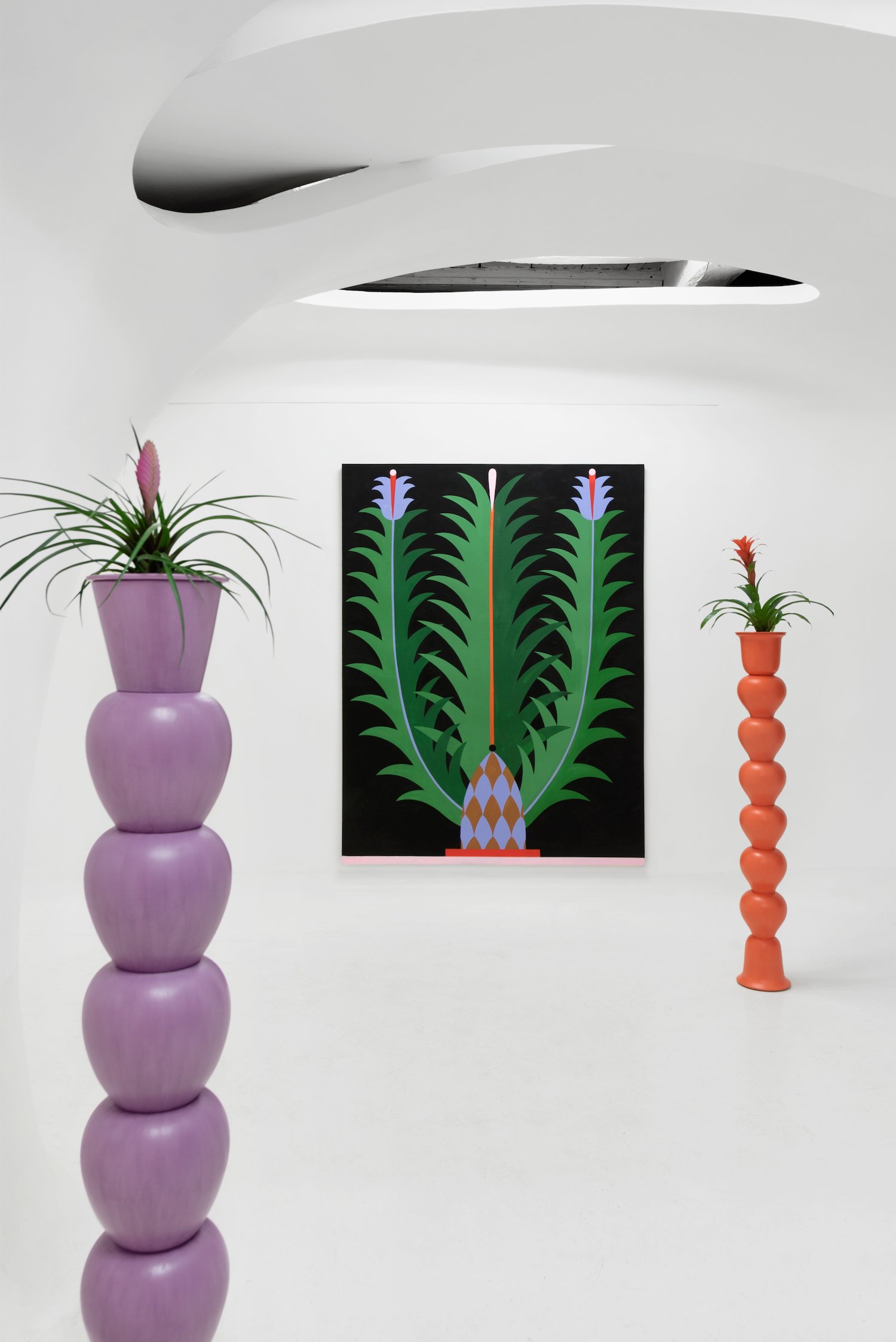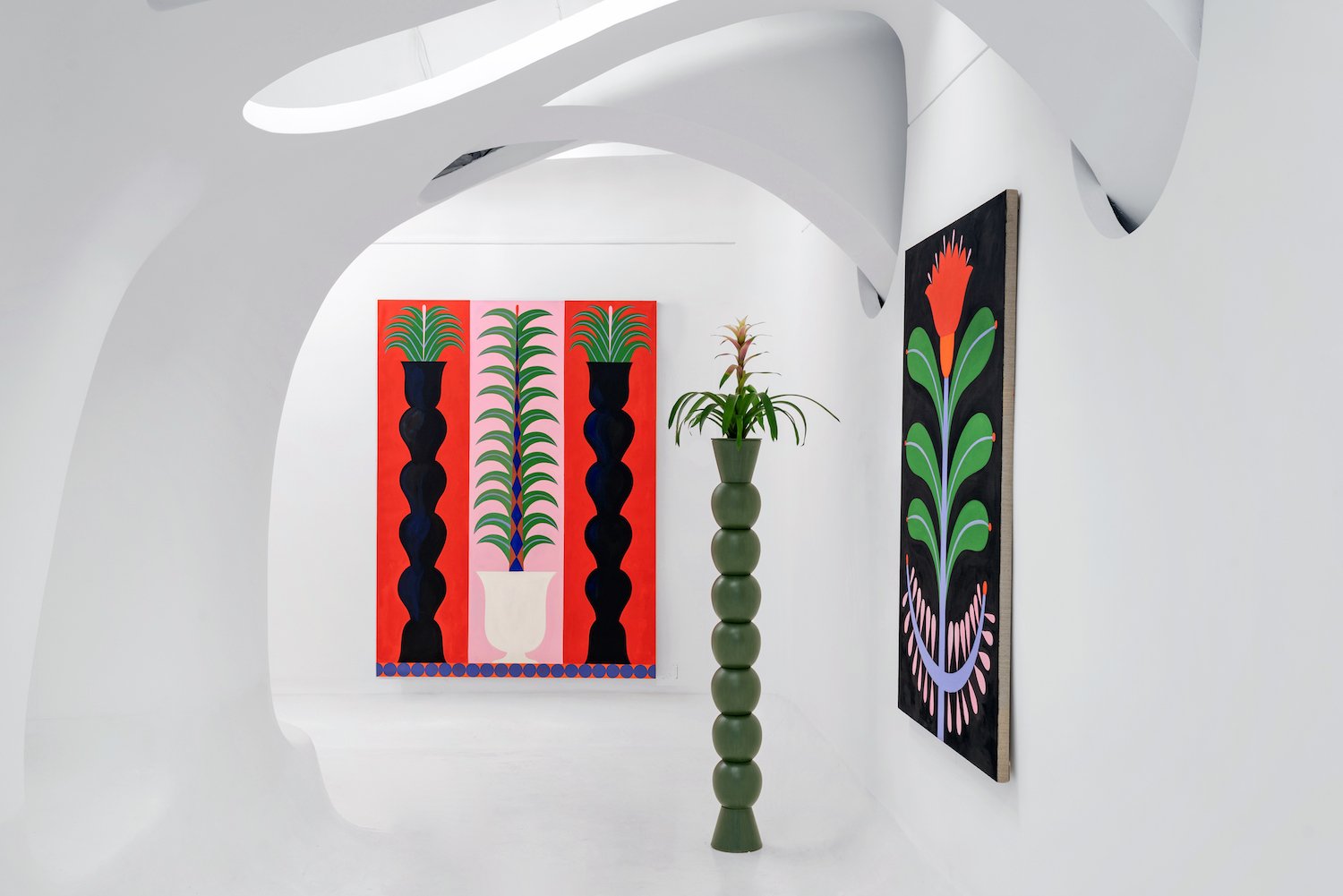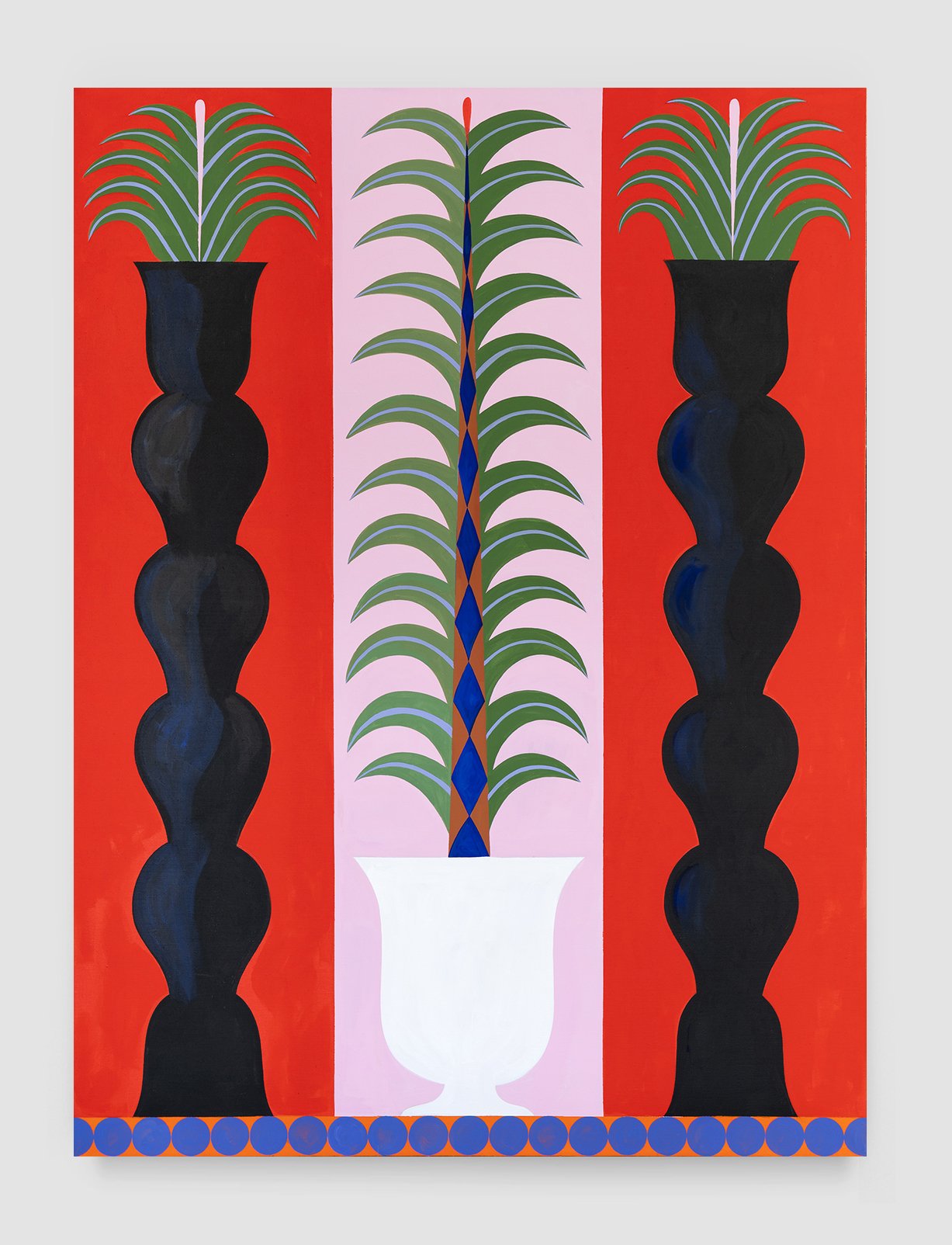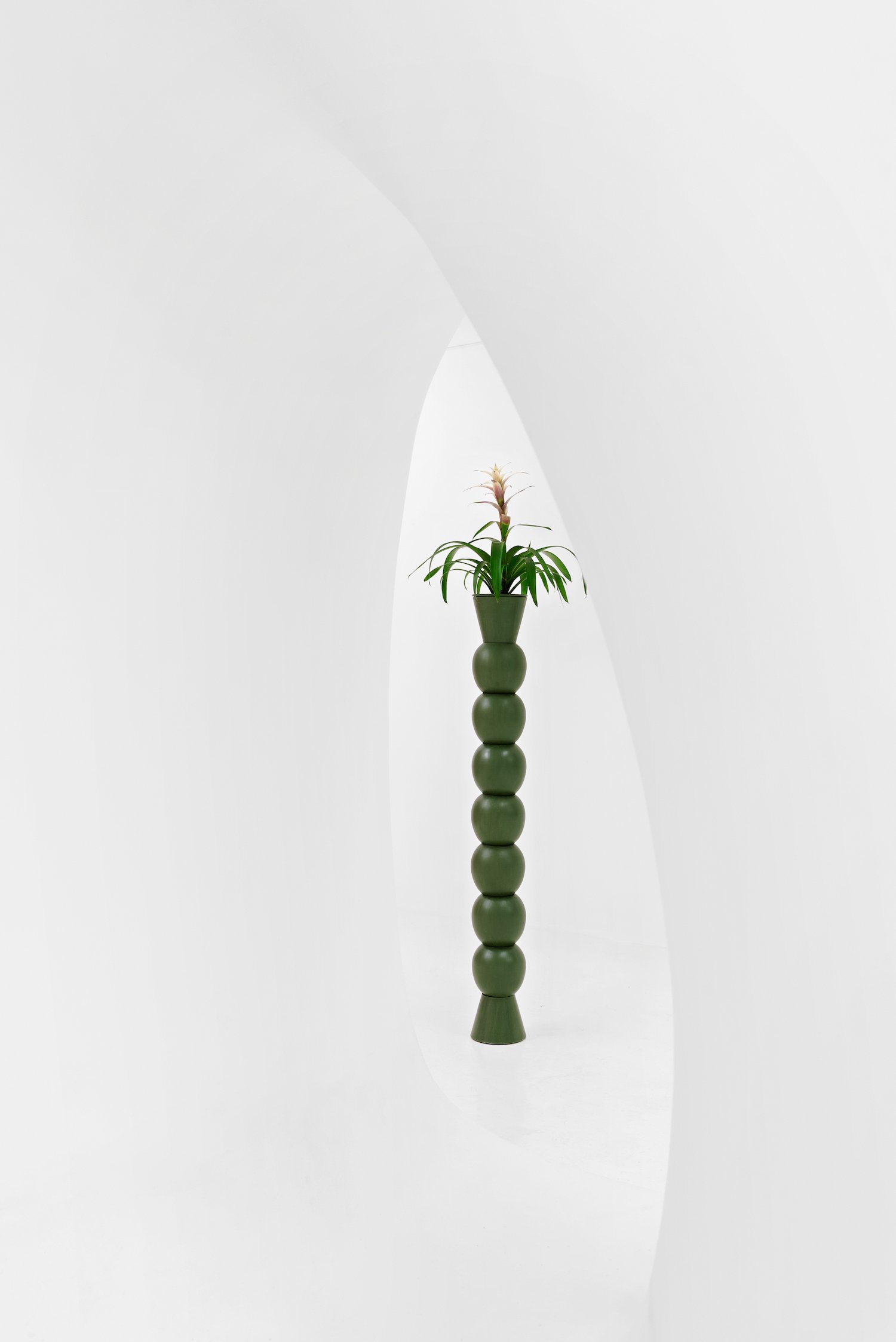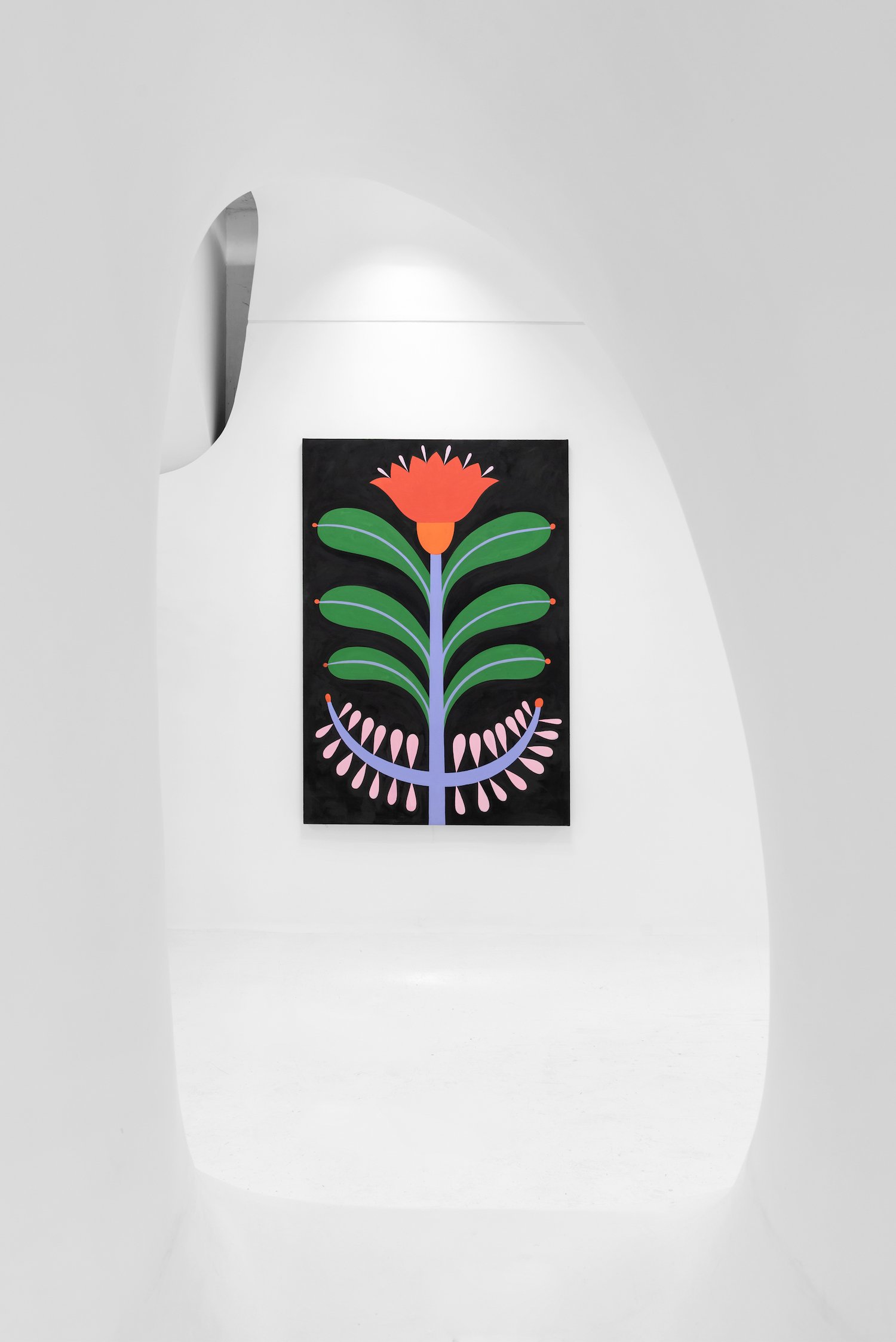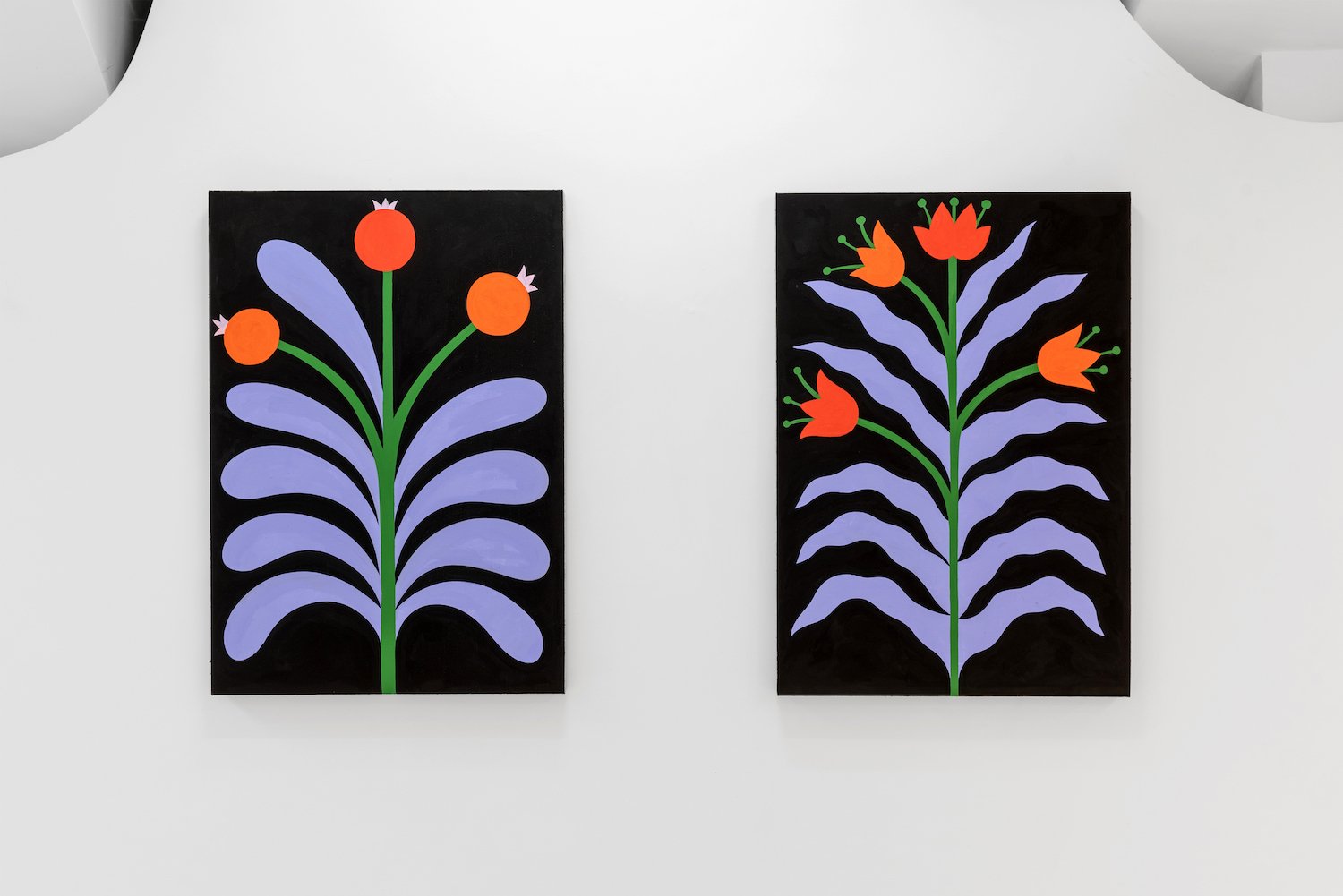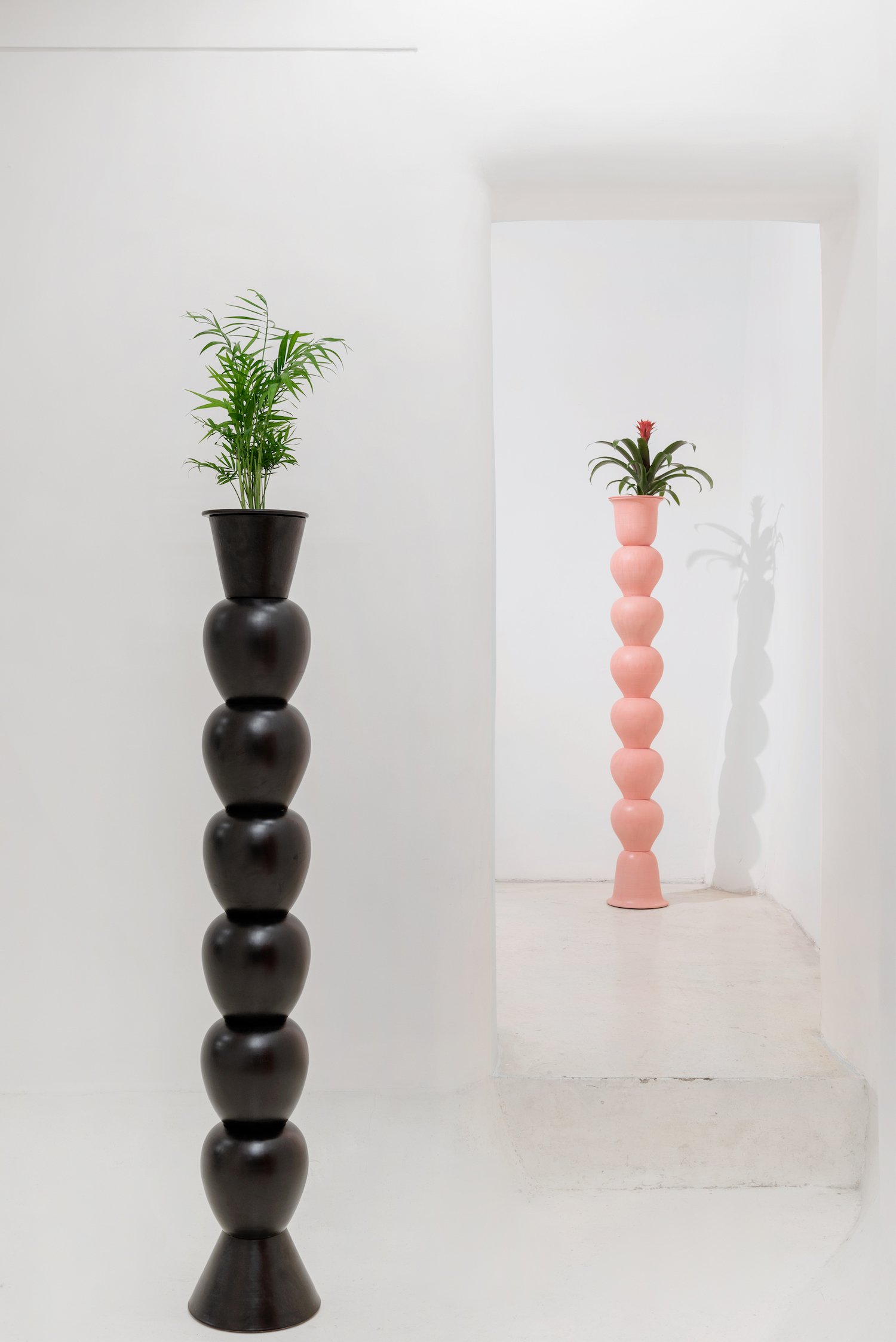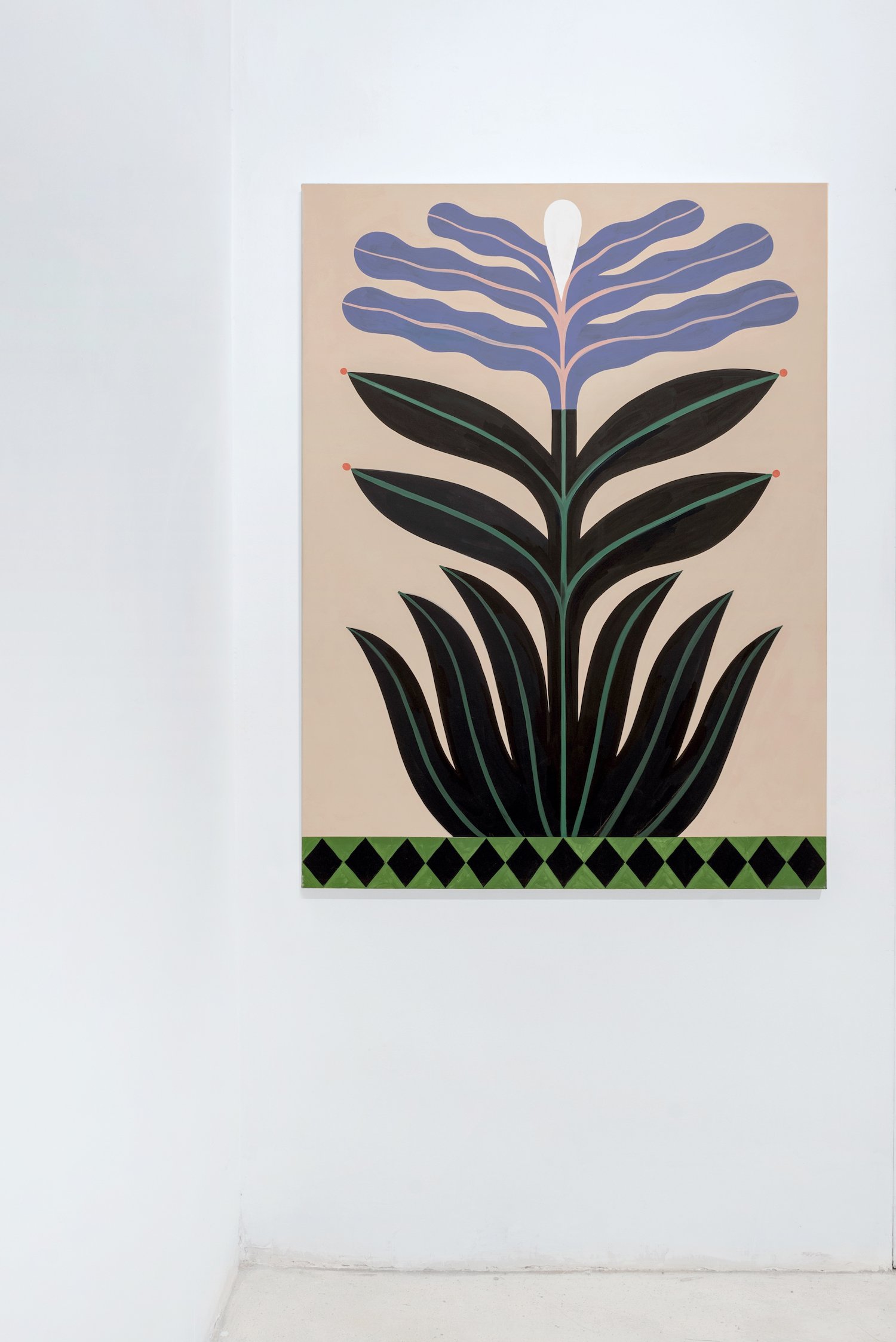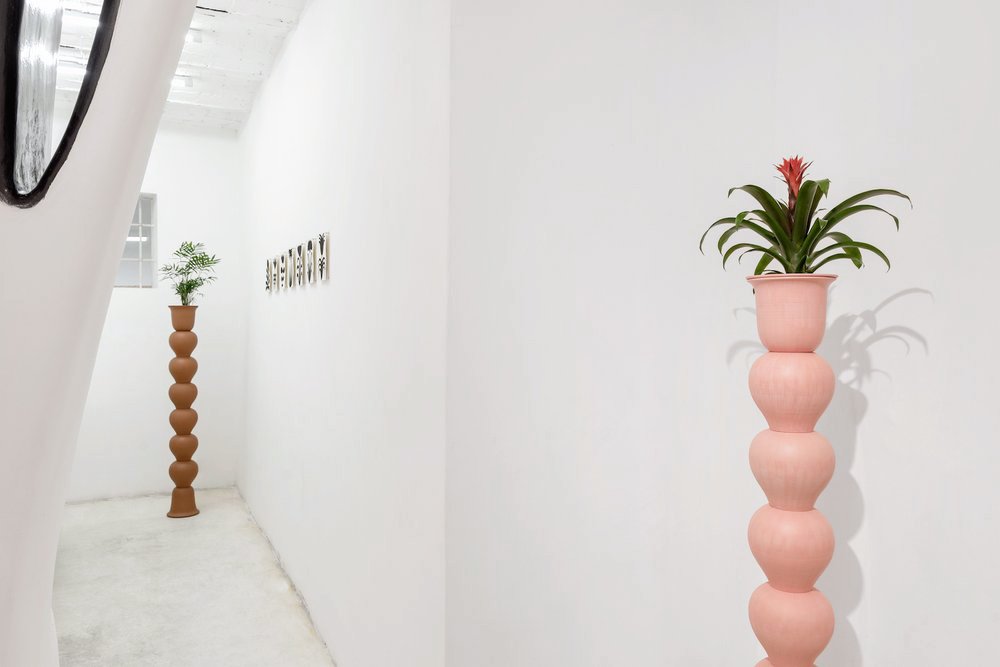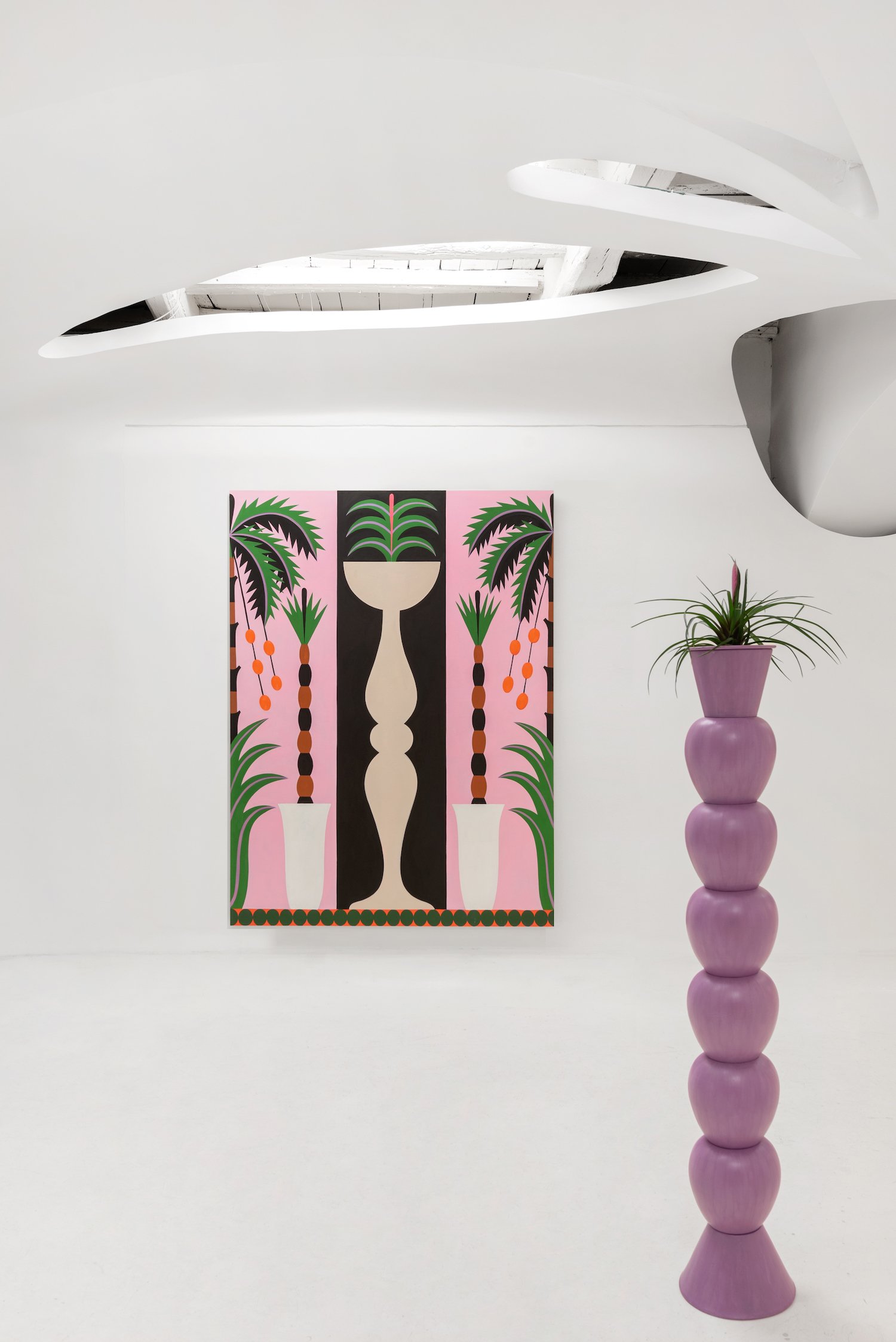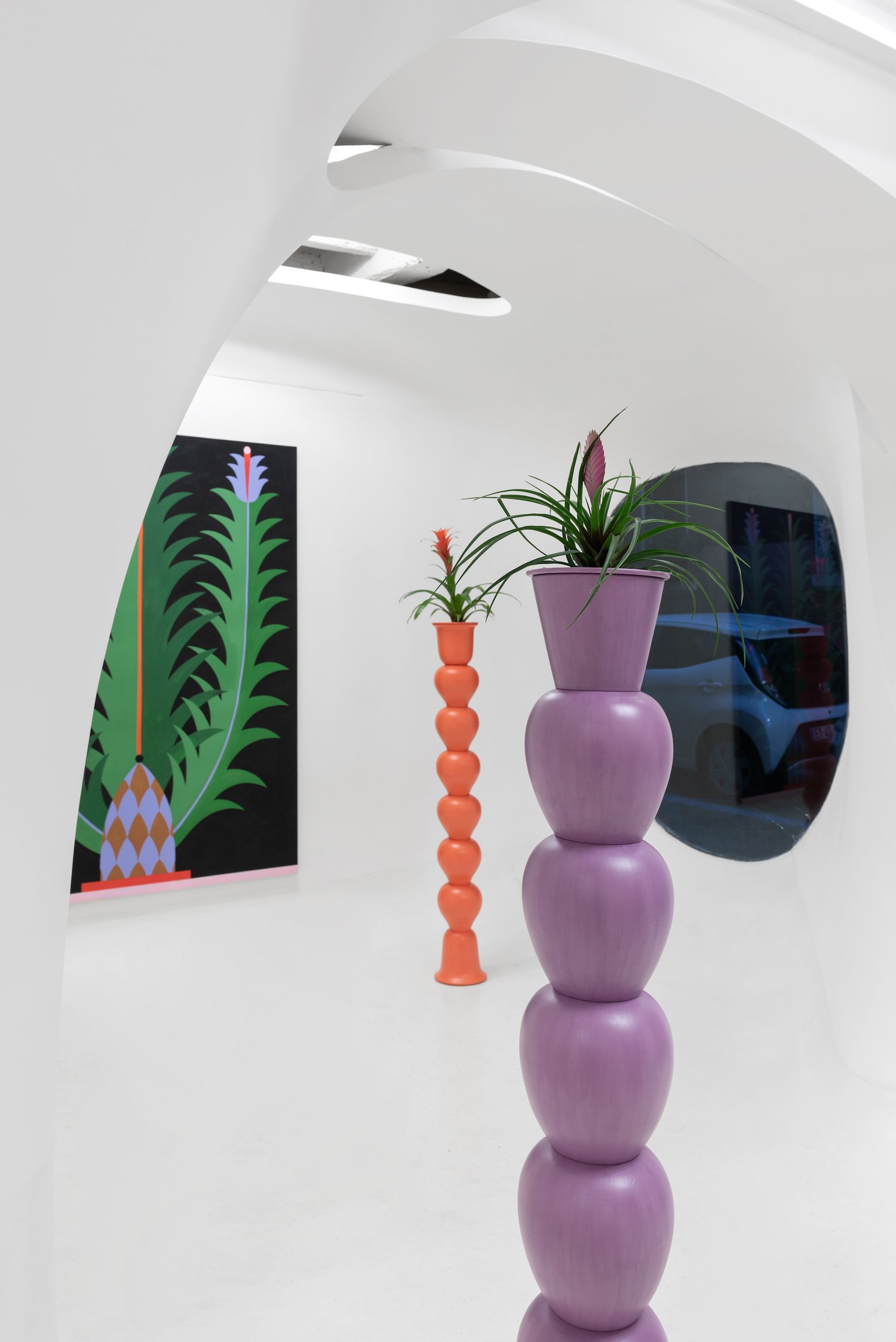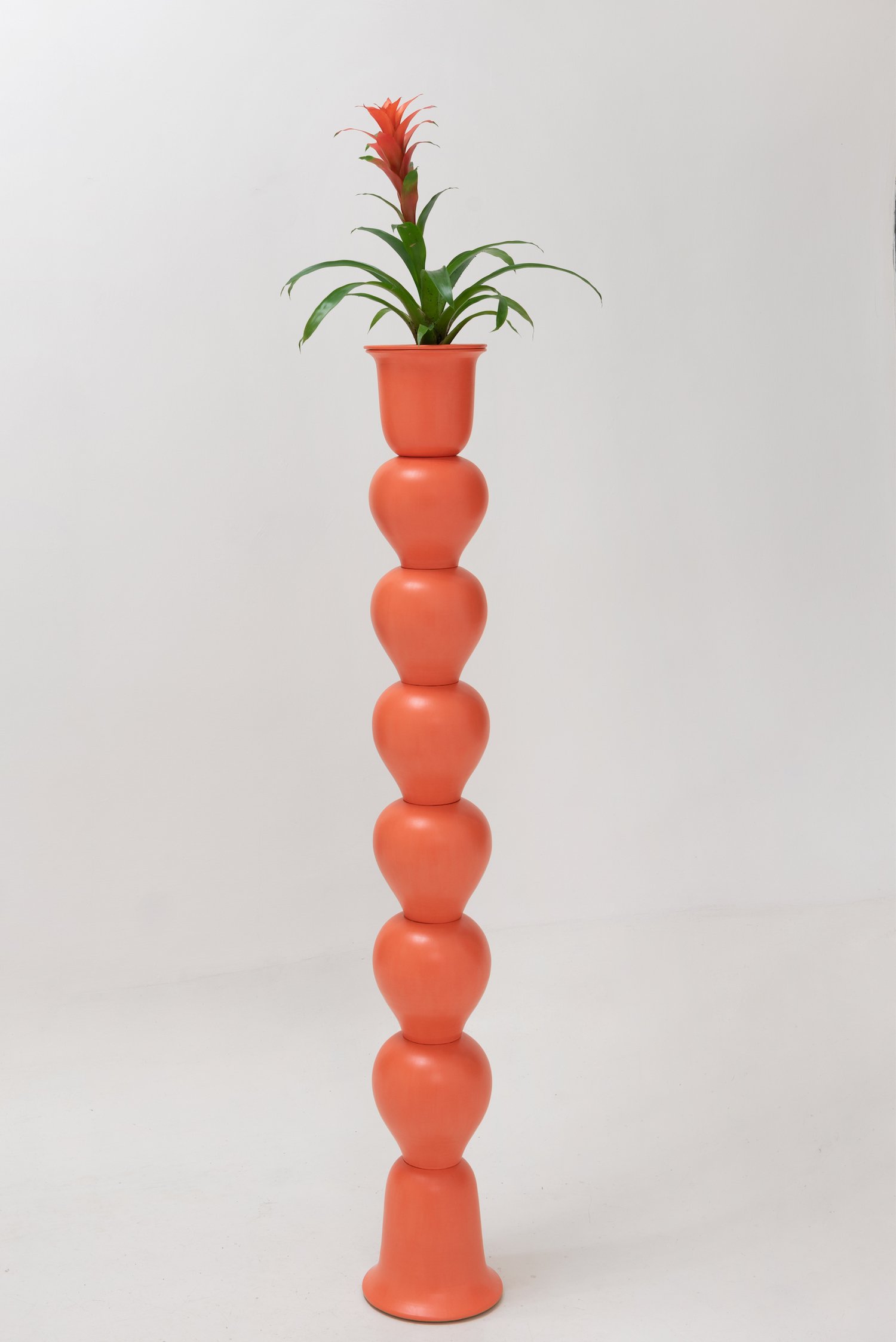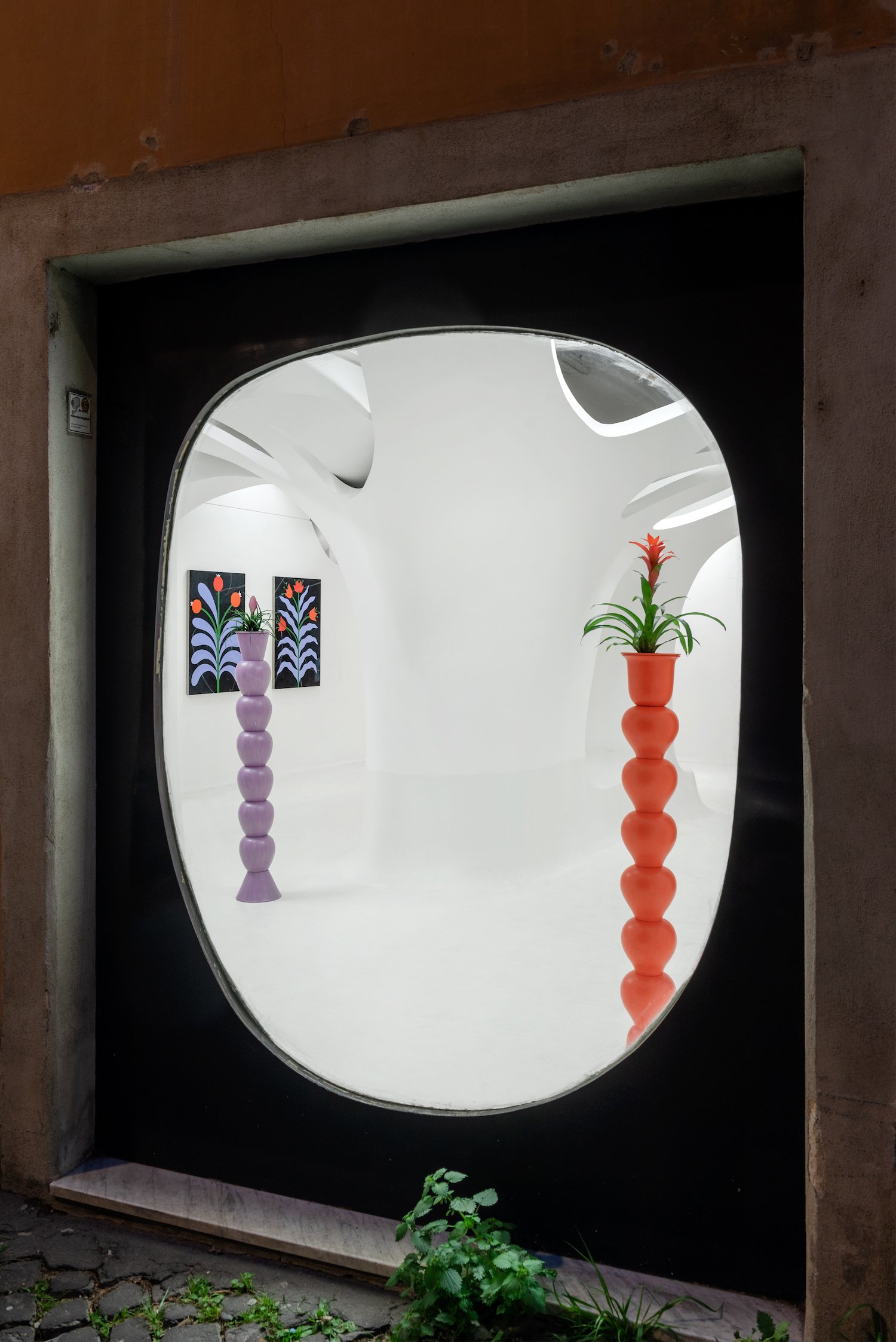Of my abstract gardening
Solo show, Ex Elettrofonica, Rome, 2022
Photo: Andrea Veneri
The exhibition itinerary unfolds in a series of new works, paintings, and terracotta sculptures with live plants, where Iacurci explores garden painting, a recurring theme in the wall decorations of Roman interiors. The painters called to work on these large mural depictions showed skilful spatial and compositional capabilities, as well as careful attention to naturalistic detail. In these painted gardens, complete with fountains, busts and columns, and enclosed by architectural elements, there was an astute harmony between the elements, where plants that actually bloom in different seasons coexisted, and any allusion to the weather was lacking.
This idealised, and therefore abstract, construction, with different times and natural cycles coexisting, is captured by Agostino Iacurci and made the subject of study for his painting. Often the artist’s painting process arises from his fascination with images of the past, which to him become enduring archetypes that require a new form, a personal reinterpretation. It is the image of the underground nymphaeum from Villa di Livia, now held in the Museo di Palazzo Massimo in Rome, and the paintings of the House of the Orchard in Pompei, that Iacurci’s imagination compares with the compositional patterns Goethe researches in his Metamorphosis of Plants. The title of the exhibit, Of my abstract gardening, is taken from a passage in this same book.
In his botanical studies, Goethe was in constant search of models that could lead to a grouping of plants, hoping they would lead to the discovery of an archetypal model of all plant forms. During his travels in Italy, Goethe searched for the Urpflanze – the original plant, but his studies were received coldly by scientists and literary circles of the time. They did, however, find success among artists, lovers, and poets.
Agostino Iacurci, therefore, starting with a visual reference that recalls his experience as a muralist, deconstructing it and distorting it with Goethe’s botanical lessons, generates a new, installational and abstract experience of garden painting.



